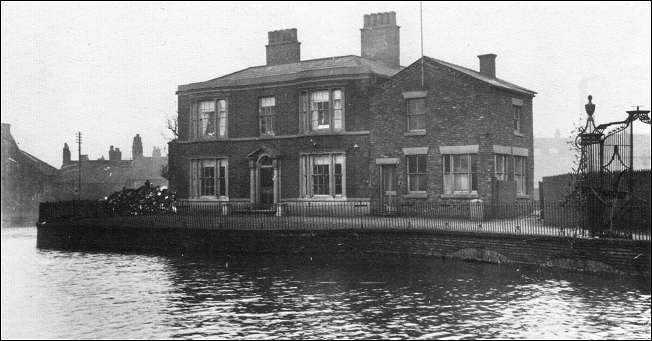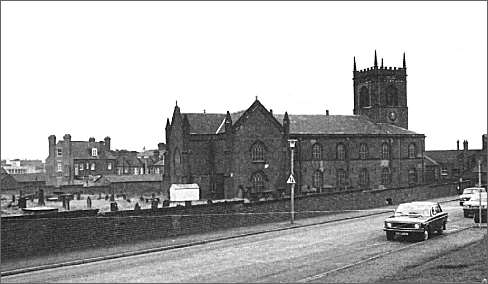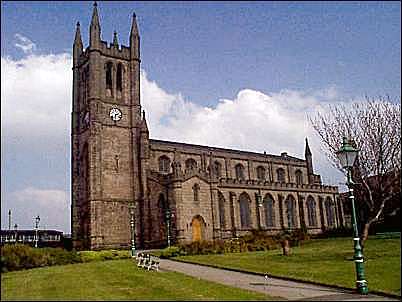|
Potworks in
Lane End:
There
was no shortage of pottery works in the Lane End area. In 1802 Allbuts
map records 22 manufactories, by 1841 Ward has the count up to 42.
"Of the more eminent manufacturers who flourished at the
commencement of the present century, were Messrs. John and William
Turner, of Lane End......
The manufacturing firms now existing here, we must, for the sake of
consistency, set down as they have been reported to us for the year
1841. These business-folks are of course liable to frequent accident
and change, and our account may perhaps be even now imperfect.
Allerton,
Brough, and Green, (four manufactories)
Hamilton and Moore
Warren and Adams
Beardmore and Birks
Colclough
James Riddle, and Co.
J. Chetham
Ray and Wynne
Goddard and Salt
John Goodwin
Yale and Barker
C. and W. K. Harvey, (three manufactories)
Deakin and Son, (two)
Bailey, Goodwin, and Robey
J. and T. Lockett, (two)
Everard, Townsend, and Colclough
Swift and Elkin
Brian
James Booth
Hilditch and Hopwood, (two)
Robinson and Dale
Batkin, Walker, and Broadhurst
Hawley
Martin
Ashwell and Cooper
W. Copestick, Sen.
Sampson Bridgwood, (three)
W. Copestick, Jun.
T. and J. Carey, (two)
Gallimore and Shufflebotham."
John
Ward "The Borough of Stoke-upon-Trent" 1843
One of the prominent
pottery enterprises mentioned by Ward was that of the Carey brothers,
John and Thomas.
Their father John was probably the potter "John
Carey & Son" recorded in Lane End
starting in around 1813.
The
brothers John and
Thomas Carey operated a total of 5 pottery factories:
Three
potteries in Lane End
The Anchor Works in Market Street, Longton
A pottery in King Street, Fenton.
John Carey had an
unusual house at the bottom of Anchor Road......
"Mr. J. Carey’s house is
rather elegant, and has its appearance improved by being placed on an
island in a large reservoir, that supplies condensing water for the
Steam Engine at the Mill, where are ground flour, and the various
materials arid colours for the manufactories; and when the engine is
working, a single jet fountain throws up warm water several feet high.
There are a beautiful small bridge, gates, large canons, &c. but the
whole is exposed to the smoke of the manufactories. The proprietor is
highly esteemed for many excellencies of character as a master and
friend." .... History of the Staffordshire Potteries - Simeon Shaw,
1829.

The Island House, Lane End
around 1900. The moat was about four
feet deep and must have been unique in the Potteries.
(Photo: Warrillow
"Sociological History of Stoke on Trent)
 more on the
Island House
more on the
Island House
 more on
Carey Brothers pottery works
more on
Carey Brothers pottery works

Colleries in Lane End:
"The mines of coal in Longton and Lane End, as well as in the Fentons
adjacent, are very extensively wrought by divers individuals and firms:
viz.,—William Hanbury Sparrow, as lessee under the Duke of Sutherland ;
Charles Smith, Esq.; the Fenton Park Company ; the Oldfield Colliery
Company ; Thos. Wynne and Co. (Mossfield) ; Mr. Ralph Hand ley, and
others.
The deepest shafts at present sunk in this vicinity, are fit least
320 yards below the surface, which is much deeper than the pits in
general in the more northerly parts of the borough.
The seams of ironstone here have been wrought since the year 1827,
when Mr. W. H. Sparrow (from the neighbourhood of Wolverhampton), took a
lease of the Duke of Sutherland's mines, and erected a blast-furnace at
Plackett's-Brook, which has been extended, and now comprises three
cupolas and hot-air apparatus, where large quantities of iron ore are
smelted, and forwarded to the South Staffordshire market."
John
Ward "The Borough of Stoke-upon-Trent" 1843

Churches:
|
St. John
the Baptist Church, Lane End
There was a church on this
site from 1762, by 1790 it was too small for the people who wished to
use it and it was also falling down, probably as a result of the coal
mining underneath. Rebuilding of the second church took place between
1792-95.The church was demolished in 1979 because of mining subsidence.

St. John the Baptist
Church - February 1975
Source: "Kevin Long"
"The church is similar to
that of Hanley, but does not appear to so much advantage, being in a
comparatively low situation; it was rebuilt about the year 1795, and is
a perpetual curacy, in the gift of trustees. The original chapel was
principally built and endowed at the charge of the late J. Bourne, Esq.
and was consecrated in 1764; it is a chapel of ease to Stoke."
Pigot & Co's 1828/9 Directory of
Staffordshire
 more on St. John's church, Lane End
more on St. John's church, Lane End
 |
|
St. James Church, Lane End
(built in 1833)

Church of St. James the Less - Uttoxeter
Road
Photo taken 1999 - taken from
Normacot Road
"St. James' church is the
church of Longton rectory; was built in 1833; is a stone edifice in the
pointed style; and has a tower."
Wilson's 1870-2 Imperial Gazetteer of England and Wales
 more on St. James church, Lane End
more on St. James church, Lane End
 |
| "The
Roman Catholic chapel was rebuilt in 1869, at a cost of £7,000."
[1870-2]
"The town embraces the
eccl. pas. of St. James the Less, St. John the Baptist and St. Paul,
Edensor. The church of St. James the Less (1833) is in Perp. style.
St. John the Baptist's Church (1763-64), enlarged 1828, is partly in
E. Eng. style. The other places of worship include a Roman Catholic
church and Baptist, Wesleyan, Primitive and Free Methodist,
Methodist New Connexion, Congregational, and Unitarian chapels."
[1898]
"There are seven ecclesiastical parishes in
the town. The Parish Church, dedicated to St. James, was erected in
1833. Among the Rectors was the late Dr. Benjamin Vale, whose
residence was sacked at the time of the Pottery riots. St. John's
Church, built in 1792-5, is still called in ecclesiastical deeds the
church of Lane End. There are other Anglican churches at Edensor,
Dresden, Normacot, and Sandford Hill, and the Roman Catholics have
an imposing edifice which is styled the cathedral of the diocese.
Dr. Ilsley, the present Bishop of Birmingham, was at one time
priest-in-charge. The Nonconformist communions are largely
represented, and the Wesleyan Methodist, New Connexion, Primitive
Methodist, and Congregational bodies possess commodious places of
worship." [1907]
|

|
![]()
![]()
![]()
![]()